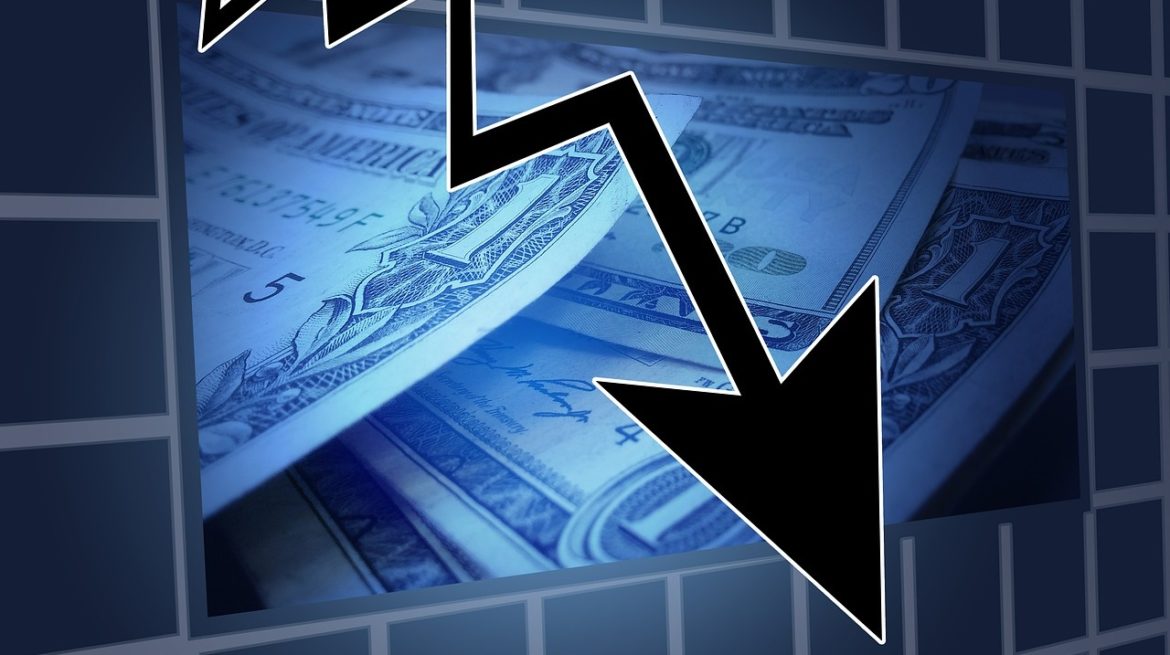Gold has all the potential to go unprecedentedly high. But silver will be gold on
Site:
Precious metals news
Nov 13, 2023 - 11:14:32 PST
Amid economic challenges, Biden's campaign communications director, Michael Tyler, controversially stated the need for "another four years to finish the job," raising concerns about what that implies. The US faces troubling signs like consecutive weeks of negative bank credit growth and declining net savings as a percentage of gross national income. Additionally, September saw the most significant consumer credit drop since May 2020, hinting at a looming recession.
Despite positive media reports on the economy, most US voters are unhappy with President Biden's economic policies. Inflation and high living costs persist, leading to 61% disapproval of Biden's economic management. Reports of economic strength contrast with public struggles over housing, fuel, and daily expenses, especially for those with limited assets. This discrepancy highlights a significant gap between policy impacts and real-world experiences for many Americans.
A majority of US voters, 61%, disapprove of President Biden's economic policies, with 70% believing they've harmed or not affected the economy, a Global Strategy Group and North Star Opinion Research poll reveals. Inflation, at 3.7% year-on-year in September, remains a major concern, with 82% worried about rising prices. The poll also found that 52% have reduced spending on necessities due to higher prices. The survey involved 1,004 registered voters nationwide.
Heightened geopolitical tensions, akin to levels not seen since the 1973 oil embargo, are significantly impacting global energy supplies. Conflicts like Israel-Hamas and Russia's Ukraine invasion have intensified the demand for liquefied natural gas (LNG), especially as Europe seeks alternatives to Russian gas. This shift is driving a boom in LNG projects, particularly in the US. Oil prices, although fluctuating, reflect these geopolitical risks.
The New York Fed's Q3 report shows rising delinquency rates for mortgages, auto loans, and credit cards. Although these rates are increasing, they remain below pre-pandemic levels. As of September, 3.0% of outstanding debt was in some stage of delinquency, up from the previous quarter but still lower than late 2019. This increase in delinquencies aligns with banks tightening lending standards and the Federal Reserve's efforts to control inflation through tighter monetary policy. Despite cooling labor market metrics, it's too early to declare an impending recession.
Nov 13, 2023 - 07:08:08 PST
The US fiscal situation is on a dangerous path, warns ex-Fed official Bill Dudley. Soaring debt costs and increasing healthcare and social security expenses are exacerbating the issue. Political dysfunction hampers resolution efforts. Recent bond market troubles and a potential Moody’s downgrade reflect growing concerns. Despite market expectations, Dudley suggests the Fed may not rapidly cut rates, focusing instead on labor market adjustments to control inflation.
Mainstream media pundits and politicians generally act unconcerned about the skyrocketing national debt and ever-growing budget deficits, but somebody has taken notice.On Friday, Moody's Investor Service lowered its outlook on US government credit from "stable" to "negative." This could be a prelude to a downgrade in the country's AAA credit rating. The agency typically resolves an outlook by either revising it back to stable or executing an actual downgrade within 18 to 24 months.
 Investors Sold a Net Record of U.S. Corporate Debt - Repatriation of Capital Could Lead To More
Investors Sold a Net Record of U.S. Corporate Debt - Repatriation of Capital Could Lead To MoreNov 13, 2023 - 05:48:20 PST
Credit managers are anxiously waiting for upcoming data to reveal if Japan's recent reduction in buying US corporate bonds is temporary or a developing trend. Rising bond yields in Japan, fueled by expectations of a shift away from its ultra-loose monetary policy, might lead Japanese investors to repatriate funds for better domestic returns. This potential shift could impact global market liquidity and increase volatility, especially as US corporate debt has seen diminishing demand from Asian investors, including those in Japan.
Nov 13, 2023 - 05:30:49 PST
The European Union is set to implement "European Digital Identity Wallets," a centralized digital ID system for storing personal and financial data. Despite privacy concerns, the EU is pushing forward with the system and the digital Euro, a central bank digital currency (CBDC). Critics warn of potential government overreach and a shift towards a system similar to China's "social credit score." The initiative awaits formal approval from the European Parliament and Council. Concurrently, the Biden White House released a framework for digital asset development last year, indicating a global trend towards digital identities and currencies.
The concept of a polycrisis highlights how various interconnected crises can amplify each other, creating massive impacts beyond their individual effects. This interplay can lead to catastrophic outcomes, particularly when systemic issues like moral decay, corruption, or unresolvable supply scarcities are involved. Traditional solutions like monetary interventions become ineffective in such scenarios. The inherent fragility of systems designed for isolated challenges becomes exposed, and overconfidence and denial further worsen the situation. By the time these systemic problems are acknowledged, it may be too late for effective resolution.
The Federal Reserve's decision to keep the federal funds rate at 5.5% highlights its uncertain and reactive approach. Struggling to determine the right rate amidst political pressures, the Fed focuses on short-term issues like managing debt costs, inflation, and unemployment. This approach, lacking long-term economic strategy, results in constant policy adjustments based on immediate concerns rather than overall economic stability.
Nov 13, 2023 - 05:10:14 PST
Jeffrey Gundlach expresses concern about the U.S. fiscal situation due to rapidly increasing interest expenses on national debt. This surge is attributed to the maturation of bonds, initially issued at very low yields of 25 to 50 basis points, which are now being reissued at significantly higher yields near 5%. This shift indicates a swift and steep rise in debt servicing costs, underscoring deeper fiscal challenges.
Peter Schiff recently appeared on Real America with Dan Ball to talk about the latest employment data and the state of the real estate market. We know there is a lot of doom and gloom in the headlines, but Peter said the situation is actually doomier and gloomier than the headlines suggest.
 Moody’s Downgrades U.S. Credit Rating to “Negative” From “Stable” Citing Large Fiscal Deficits
Moody’s Downgrades U.S. Credit Rating to “Negative” From “Stable” Citing Large Fiscal DeficitsNov 12, 2023 - 08:54:02 PST
Moody's has downgraded the U.S. credit outlook to "negative," citing unmanageable fiscal deficits and worsening debt affordability. Following Fitch's earlier downgrade, this move reflects deepening concerns over the U.S.'s financial health amidst political disputes and rising federal spending. Experts foresee persistent deficits and ballooning interest costs, with little hope for substantial fiscal reform before 2025. This bleak assessment adds pressure on an already strained bond market, raising alarms about potential government shutdowns and the urgent need for lawmakers to tackle the spiraling budget deficits.
 MARKETS & ENERGY UPDATE NOV 12th: Why Is The Oil Price Falling With Declining Global Oil Inventories & Escalating...
MARKETS & ENERGY UPDATE NOV 12th: Why Is The Oil Price Falling With Declining Global Oil Inventories & Escalating...November 12, 2023
Something just doesn't make sense in the oil market when falling global oil inventories and escalating tensions in the Middle East suggest rising, not tumbling, prices... LOL. Furthermore, global oil demand is actually stronger than last year... SO WHAT GIVES??
Have we seen the beginning of a financial market selloff? Join Mike Maloney and Alan Hibbard as they take a look at the biggest stories in markets and precious metals this week.
The current investment landscape presents a unique opportunity in precious metals, especially silver. Despite having similar physical quantities to gold, silver's significantly lower market cap, combined with its extensive industrial use, positions it for potential price surges. The imbalance between silver's industrial demand and supply suggests an impending price increase. Even a minor shift of investments from gold to silver could dramatically escalate its value, given silver's smaller market capitalization. This scenario sets the stage for a potentially explosive rise in silver prices, marking it as a standout investment opportunity.
BofA's "Biggest Picture" report anticipates the 2020s as a decade of higher inflation, fluctuating interest rates, and recurrent economic disruptions. It forecasts a scenario of US debt and dollar weakening, alongside volatile equity markets influenced by significant societal, policy, geopolitical, and technological shifts. The report suggests a positive environment for precious metals, seen as a stable hedge in an era marked by financial uncertainty, currency debasement, and rising inflationary pressures.
Nov 10, 2023 - 12:08:48 PST
Millions of dollars will soon be given away with no strings attached as guaranteed income programs launch on the west coast. California’s programs join dozens of similar pilots across the country, including St.Louis, Missouri, Ann Arbor, Michigan, Fairfax County, Virginia, and more.
 Inflation Expectations Reach Highest Since 2011: Consumer Sentiment Falls in November
Inflation Expectations Reach Highest Since 2011: Consumer Sentiment Falls in NovemberNov 10, 2023 - 12:01:38 PST
Consumer sentiment in the U.S. has hit a distressing low, dropping to 60.4 in November, the worst level since May and continuing a four-month downward trend. This decline reflects deepening worries over high interest rates and escalating global conflicts. Inflation expectations have risen to alarming levels not seen in over a decade, intensifying concerns about the economy's future. Despite stagnant recent CPI figures, the Federal Reserve acknowledges that the battle against inflation is far from over, underscoring the persistent economic hurdles ahead.









